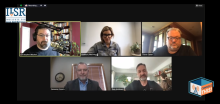Biden Administration Decides Cities Should Not Use Broadband Dollars for Broadband
Earlier this year in March, the Biden Administration signed the American Rescue Plan Act, which included, among many other things, multiple sources of funds for broadband infrastructure. The U.S. Department of Treasury was tasked with writing the rules of how local governments can spend the various funds. The Interim Rule has been published and it appears to significantly limit local ability to invest in needed networks.
The rules say that communities are expected to focus on areas that do not have 25/3 Mbps service reliably available. But there is no measure of what “reliably” means (in federal statute or otherwise). More than 90 percent of Americans have 25/3 “available” to them by best estimates. The result is considerable confusion for urban areas across the nation who no longer qualify for broadband investments under a strict reading of the proposed rules. This is not what the Biden Administration had suggested we should expect in its many press communications about its broadband approach.
This discussion is about Section 602, which details the direct payments to local governments under the Coronavirus State Fiscal Recovery Fund. The aid offered to local governments has numerous authorized expenditures, including broadband infrastructure.



